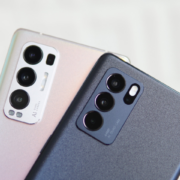Refurbished smartphones offer a sustainable alternative to purchasing new devices, significantly contributing to the circular economy. By opting for refurbished phones, consumers help reduce electronic waste and the demand for raw materials. According to the French Environment and Energy Management Agency (ADEME), buying a refurbished smartphone instead of a new one saves approximately 261.3 kg of raw materials and 77.59 kg of CO2 emissions over two years. This reduction in resource consumption and emissions is crucial in mitigating the environmental impact of smartphone production.
To maximise the benefits of refurbished smartphones, it is essential to follow best practices when purchasing them. Always buy from reputable sources that offer certified refurbished devices, ensuring they have undergone rigorous testing and quality checks. Look for warranties and return policies to safeguard your investment. Additionally, consider the age of the device; newer models are more likely to receive software updates and have better performance, making them a more sustainable choice in the long run.
The impact of choosing refurbished smartphones extends beyond individual savings. It supports the broader goal of a circular economy by extending the life cycle of electronic devices and reducing the need for new raw materials. The production phase of a new smartphone accounts for 85-95% of its total carbon emissions. By extending the lifespan of existing devices, we can significantly cut down on these emissions. For instance, adding just one year to the life of all smartphones globally could save as much carbon as taking 4.7 million cars off the road. Embracing refurbished smartphones is a practical step towards a more sustainable future.











